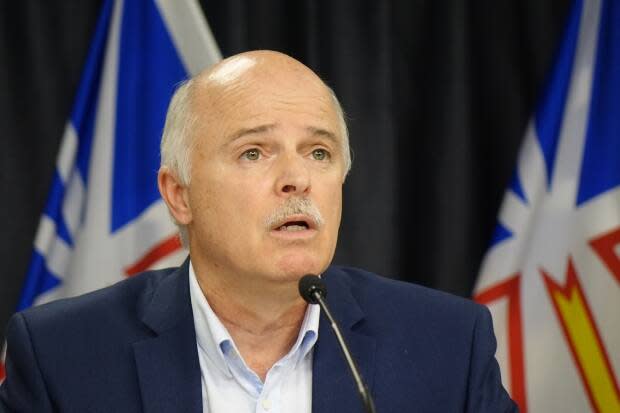Preventive Healthcare Practices That Save Lives

The foundation of longevity and vitality rests not merely on cures but on foresight. Preventive healthcare practices embody this foresight, offering tools and methods to shield individuals from debilitating conditions before they take root. Regular screenings, timely vaccinations, balanced lifestyles, and informed awareness stand as guardians of health. Just as communities thrive when public well-being is prioritized, individuals flourish by adopting such measures. To delve deeper into holistic approaches, see modern wellness programs that integrate physical and mental care seamlessly.
The Philosophy of Prevention
Prevention transcends the avoidance of disease—it represents a proactive lifestyle. Rather than waiting for symptoms to dictate action, individuals embrace vigilance. From maintaining robust immunity to detecting silent conditions early, prevention shifts healthcare from reactive to protective.This mindset reduces hospitalizations, cuts long-term medical costs, and enhances quality of life. It is an investment in resilience, fortifying both body and mind against unforeseen ailments.
Routine Screenings and Early Detection
Regular medical screenings act as sentinels against invisible threats. Blood pressure checks, cholesterol monitoring, cancer screenings, and diabetes tests highlight vulnerabilities before they manifest as crises. Early detection often dictates prognosis, turning potentially fatal illnesses into manageable conditions.
Pap smears, mammograms, colonoscopies, and prostate exams form critical cornerstones in this arsenal. By identifying risks early, individuals gain the precious commodity of time—time to treat, to adapt, and to heal.
Immunizations and Vaccination Campaigns
Vaccinations remain one of humanity’s most profound triumphs. They protect individuals while simultaneously safeguarding communities through herd immunity. Diseases once rampant—polio, measles, tetanus—are now rare in many regions thanks to global campaigns.
Even in adulthood, immunizations remain vital. Influenza shots, boosters for tetanus and pertussis, and targeted vaccines for travel illustrate their ongoing relevance. These shield populations against evolving pathogens and pandemics, reinforcing collective safety.
Nutrition as Preventive Medicine
Diet serves as the most constant and intimate form of preventive care. Whole foods, abundant in fiber, vitamins, and antioxidants, create cellular armor against disease. A balanced intake of lean proteins, leafy greens, nuts, seeds, and whole grains nurtures vitality and stabilizes immunity.
Excessive sugar, processed foods, and saturated fats erode this foundation, fueling chronic conditions like obesity, diabetes, and heart disease. The axiom “food as medicine” is validated daily in both clinical studies and lived experience.
Exercise and Physical Activity
Movement invigorates every system of the body. Exercise strengthens the heart, enhances lung capacity, and improves circulation. Beyond physical effects, it alleviates stress, uplifts mood, and sharpens cognition.
Even moderate activity—brisk walking, cycling, swimming—lowers risks of chronic illness. Strength training preserves bone density, guarding against osteoporosis, while flexibility practices prevent injury. The human body, designed for motion, thrives when nurtured through activity.
Mental Health and Emotional Resilience
Preventive health extends beyond the physical. Psychological balance and emotional resilience are pillars of well-being. Stress management, therapy, meditation, and mindfulness practices mitigate risks of depression, anxiety, and stress-induced ailments.Neglecting mental health undermines immunity, disrupts sleep, and accelerates decline. Nurturing the mind ensures harmony with the body, sustaining a holistic approach to prevention.
Sleep Hygiene and Restorative Practices
Quality sleep restores energy, repairs tissues, and consolidates memory. Chronic sleep deprivation, however, compromises immunity, heightens blood pressure, and predisposes individuals to cardiovascular disease.Establishing regular sleep schedules, minimizing screen exposure before bed, and creating restful environments cultivate restorative rest. Sleep, often overlooked, is as essential as nutrition and exercise.
Avoidance of Risk Behaviors
Preventive practices also involve restraint. Avoiding tobacco, limiting alcohol consumption, and steering clear of recreational drugs significantly reduce disease risks. These substances are major contributors to cancers, liver diseases, and cardiovascular conditions.Replacing harmful habits with constructive outlets—hobbies, sports, or creative pursuits—strengthens long-term wellness. Self-control becomes both shield and compass.
Oral Health and Systemic Connections
Dental care often receives less attention, yet oral health interconnects with systemic health. Gum disease correlates with heart disease, diabetes complications, and even respiratory conditions.Routine dental visits, proper brushing and flossing, and mindful dietary habits protect oral ecosystems. A healthy mouth mirrors and sustains a healthy body.
Workplace and Environmental Safety
The spaces where people live and work directly influence health. Ergonomic designs prevent musculoskeletal injuries, while clean environments reduce exposure to toxins. Safe workplaces ensure productivity without compromising wellness.Environmental health—clean air, safe water, reduced pollutants—remains a global priority. Communities benefit when infrastructure and policy reinforce preventive principles.
Technology’s Role in Prevention
Digital tools amplify access to preventive measures. Wearable devices monitor activity, heart rates, and sleep cycles. Apps encourage fitness, track nutrition, and provide mental health resources. Telemedicine expands accessibility, connecting individuals with professionals at critical moments.As technology evolves, predictive analytics and artificial intelligence will forecast risks, tailoring individualized prevention plans. Data-driven insights transform care into a personalized safeguard.
Public Health Campaigns
Societal well-being flourishes when public health campaigns spread awareness. Anti-smoking initiatives, nutritional education, and safe sex campaigns highlight collective responsibilities. When populations adopt healthier behaviors, nations thrive.The success of such initiatives relies on accessibility and inclusivity, ensuring vulnerable groups are not left behind. Preventive health is both a personal duty and a social obligation.
Preventing Lifestyle Diseases
Lifestyle diseases—hypertension, obesity, type 2 diabetes—dominate modern medical landscapes. They result primarily from choices surrounding food, movement, and stress. By addressing root causes, these conditions can be mitigated or avoided altogether.A society attentive to prevention reduces the burden on healthcare systems. Families inherit healthier legacies when such practices are normalized.
The Role of Education
Health literacy empowers individuals to make informed choices. Understanding risks, recognizing early symptoms, and knowing preventive options build a resilient population. Schools, workplaces, and media all hold responsibility in spreading such knowledge.Education transcends information—it inspires transformation. A population equipped with understanding becomes an active participant in its own preservation.
Integrating Holistic Wellness
Modern preventive approaches embrace holistic wellness. Traditional medicine, alternative therapies, and modern science converge to create layered defenses. Acupuncture, yoga, herbal medicine, and mindfulness complement clinical care, enriching the preventive toolkit.Such integration acknowledges that health is multifaceted, extending beyond physical cures into spiritual and emotional realms.
Generational Impact of Prevention
When preventive practices are embraced, they ripple across generations. Parents who prioritize health model behaviors that children adopt. Communities flourish when preventive norms are passed forward.This generational legacy ensures continuity of wellness, sparing future populations from preventable suffering. Health becomes heritage, not just an individual pursuit.
Community Engagement and Support
Local communities serve as incubators of prevention. Support groups, fitness clubs, and community clinics strengthen bonds while fostering healthy behaviors. Social accountability motivates individuals to remain committed to wellness.Communities thrive when collective health becomes a shared mission. For more insight, explore community wellness initiatives that highlight grassroots efforts to build resilience.
Economics of Prevention
Preventive healthcare reduces long-term costs dramatically. While treatment consumes vast resources, prevention minimizes burden on both individuals and healthcare systems. Vaccinations, screenings, and education cost significantly less than managing chronic conditions.Healthy populations also drive stronger economies. Productivity rises, absenteeism falls, and societal progress accelerates when wellness is prioritized.
Cultural Dimensions of Prevention
Every culture carries unique preventive traditions—herbal remedies, fasting rituals, seasonal diets. Respecting and integrating cultural wisdom enriches the collective arsenal of prevention.Cross-cultural dialogue fosters innovation, blending ancient practices with modern science to create comprehensive solutions.
Global Perspectives
Globally, preventive strategies vary but share common objectives. Developed nations emphasize technology-driven monitoring, while developing nations prioritize access to clean water, sanitation, and vaccines. Together, these approaches converge toward healthier societies.International collaboration ensures that advancements benefit all populations. Shared knowledge and resources accelerate global health equity.
Building a Preventive Future
The future of health depends on embedding prevention at the core of policy, education, and lifestyle. As medicine advances, so too must awareness and accountability. A world oriented toward prevention secures longer, healthier, and more fulfilling lives.For a broader understanding of integrated approaches, review long-term health strategies that emphasize the synergy of technology, lifestyle, and policy in shaping tomorrow’s well-being.



